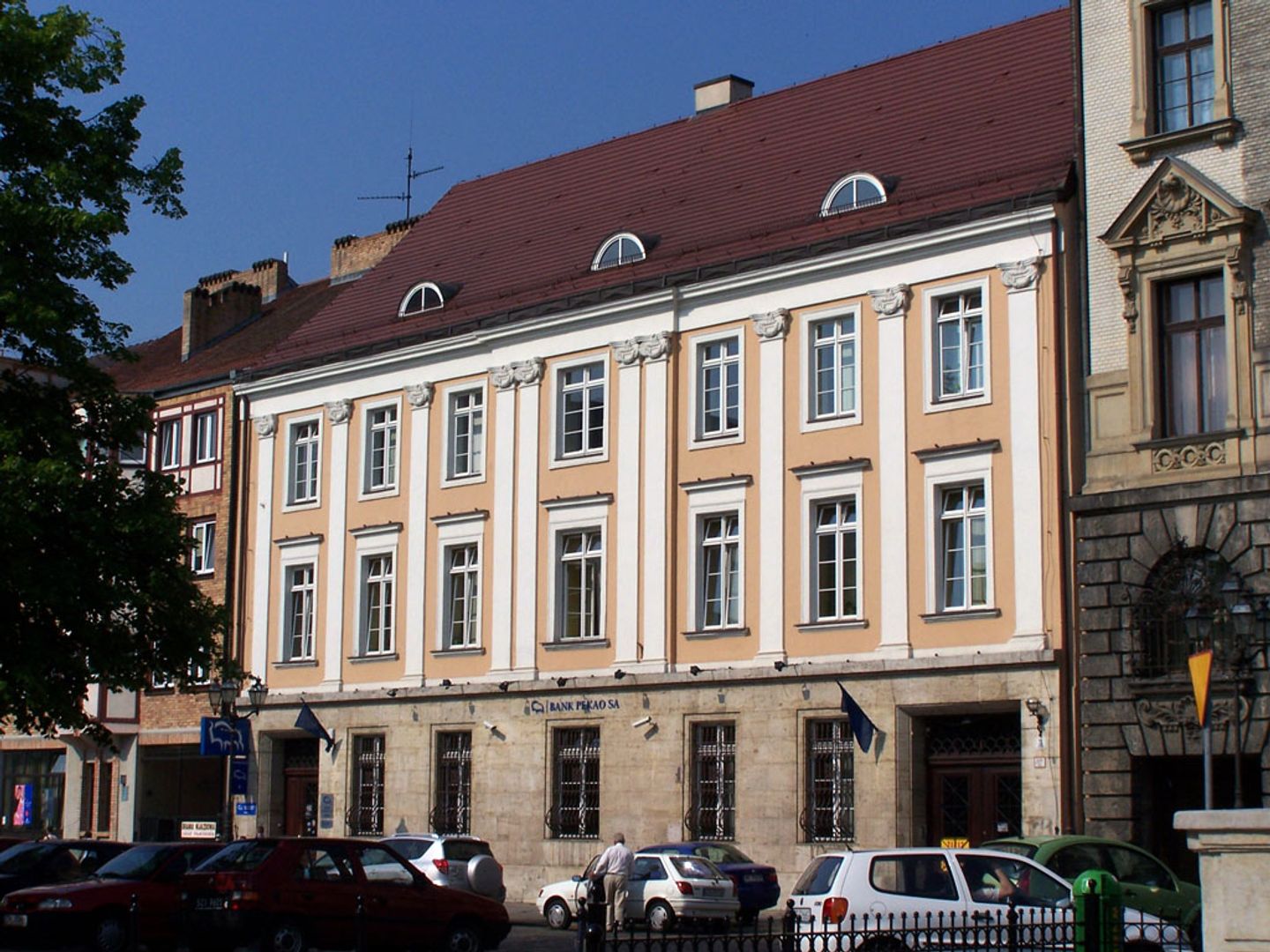Ionian Palace in Szczecin
6.44

Overview
The Ionic Palace, located at 3 White Eagle Square in Szczecin, is a neoclassical building named after its distinctive Ionic pilasters. In the 18th century, a single-story townhouse owned by forester Bock stood on this site. During the 19th century, the structure was expanded by adding an additional floor, and its façade was redesigned in the neoclassical style, reflecting the evolving architectural trends of the era. The palace played a significant role in the city's financial life, serving as the headquarters for various banks—starting with the Royal Bank, followed by the Imperial Bank, and later the Deutsche Bank after World War I. In 1924, a glazed hall designed by architect Friedrich Liebergesell was added, emphasizing the building's modernized character. After World War II, the palace continued to house banks, including PKO BP and PBKS SA, and around the turn of 1999/2000, it was occupied by Pekao SA. The history of this building illustrates the evolution of urban architecture and changes in the functioning of financial institutions in Szczecin. In December 2021, the building was handed over to the Academy of Arts, opening a new chapter in its history and contributing to the development of the city's cultural life. The Ionic Palace is not only an example of unique architecture but also a witness to the turbulent history of the region, making it a valuable site to explore and document.
Location
District
City center
City
Szczecin
Tertiary Administrative Division
Kolbaskowo
County
Gryfino County
Country
Tickets
Powered by GetYourGuide
2025 Wizytor | All Rights Reserved